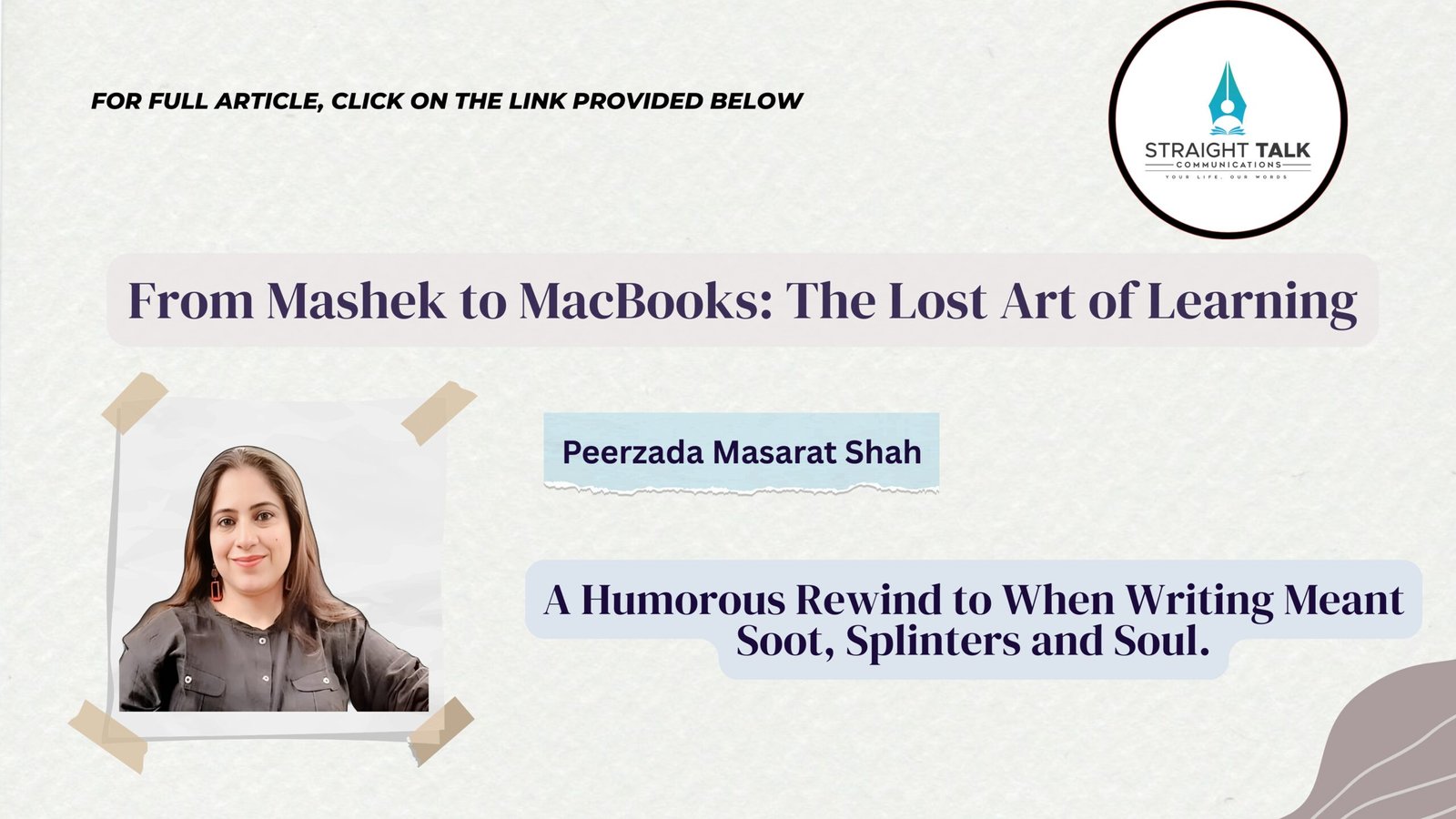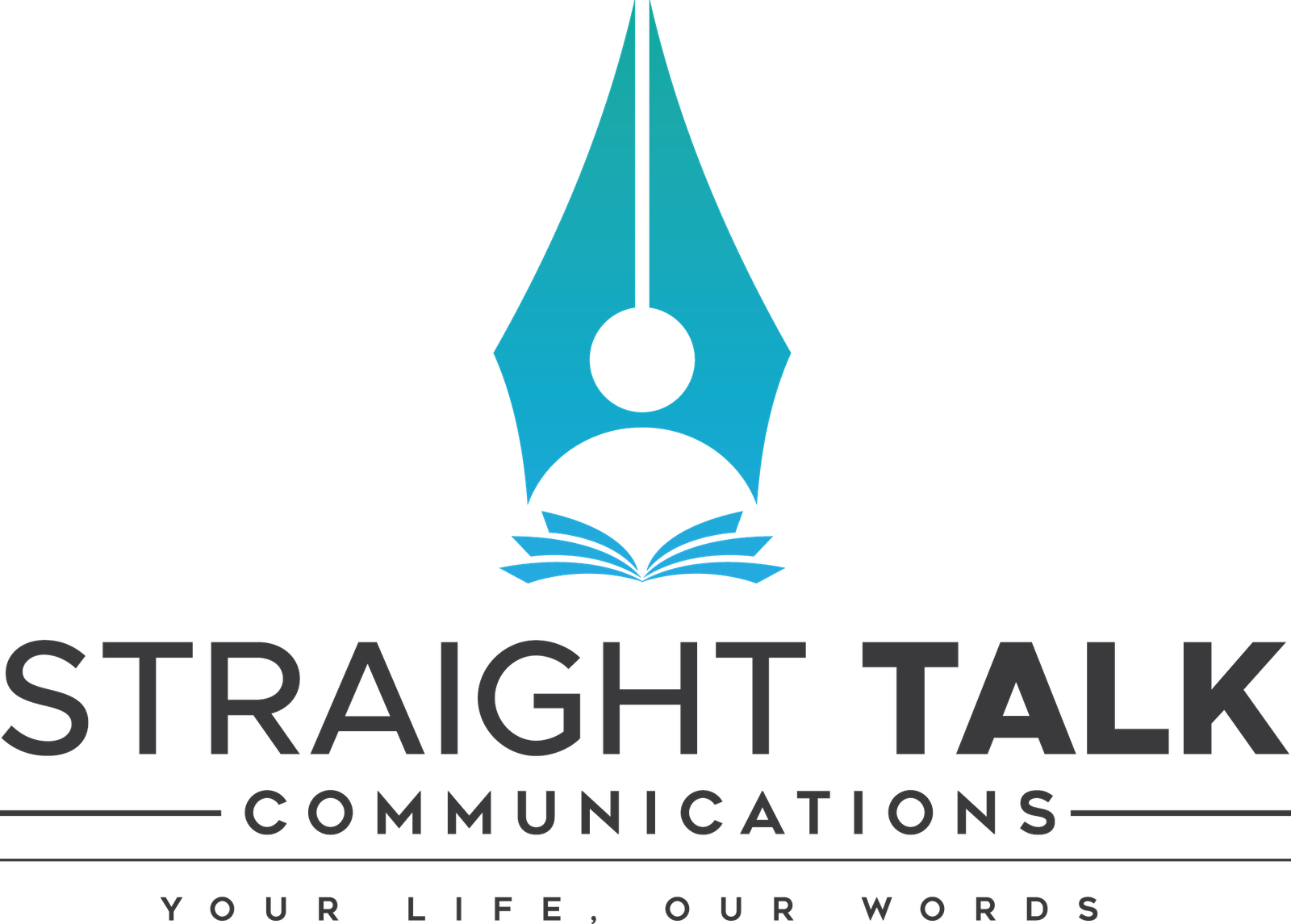From Mashek to MacBooks: The Lost Art of Learning

A Humorous Rewind to When Writing Meant Soot, Splinters and Soul.
Peerzada Masarat Shah
Once upon a time—long before backlit displays, styluses with pressure sensitivity or classrooms where AI completes your homework—there existed a world where learning demanded sweat, soot and the occasional splinter. This was the era of the mashek: a humble wooden slate, a maize-stem pen (qalam) and ink brewed from a mixture that would make a modern chemistry teacher faint.
Yes, dear touchscreen-tappers, we wrote on wood. And no, it didn’t sync with Wi-Fi.
Our “stationery” kits were nothing short of artisan. Discarded Chelpark ink bottles were repurposed—not for nostalgia, but for survival. We filled them with a homemade slurry: powdered clay mixed with water, shaken until our arms gave out. It wasn’t just ink; it was legacy in liquid form.
A freshly bought mashek was an eyesore—bright red, with yellow lines screaming like a circus tent. Naturally, we couldn’t write on something so offensive to our aesthetic. So came the baptism: an overnight soak in a canal, preferably weighed down by a brick. Why? Because the paint had to suffer before the slate could learn discipline. Much like us.
By morning, the mashek emerged pale and repentant. Then began the soot ritual. We collected soot from kerosene lamps or the blackened bottoms of cooking pots. If you were particularly enterprising, you’d scrape it off an old, burnt transistor radio. This soot was smeared lovingly onto the slate—a tactile experience that left your fingers looking like you’d just mined coal. And we wore those smudges like war paint.
Next came polishing—oh, the drama. We weren’t satisfied until the mashek gleamed. We scraped the surface with the sharp edge of broken glass or ceramic shards, risking bloodshed for academic preparation. Then, with a thread dipped in our mud-ink concoction, we stretched perfect lines across the board. If the thread wobbled or our grip slipped? Back to square one, poor soul.
You’d think boys, with all their scrappy energy, would dominate this craft. Wrong. The girls mastered it. Not only did they draw straighter lines, but they also decorated the borders with tiny floral designs, leaving barely enough space to write. Strategic, artistic, and space-efficient—a masterclass in handwriting minimalism.
Of course, in every household, there’s that one DIY rebel. In ours, it was my sister. Tired of lugging around a mashek the size of a dinner tray, she sawed it in half. Her plan? A portable version. Halfway through, the cut went crooked, the blade got stuck, and the mashek ended up looking like it had been mauled by a wild animal. It became a family heirloom.
She earned the nickname “Slate Butcher” at school.
Writing was a ceremony. We sat cross-legged on the floor, mashek balanced on our thighs, qalam in hand—its nib carefully carved with a razor blade (and the occasional sliced fingertip as evidence). The number 786 was inscribed at the top, a spiritual nod before diving into grammar and multiplication tables. English on one side, Urdu on the other. No switching tabs—just flipping the slate.
Mistakes weren’t deleted—they were erased using fresh neem leaves plucked from the schoolyard. Biodegradable before it was cool. If your mashek looked the same for multiple days, you risked being caught during the teacher’s post-assembly inspection. Some educators, bless them, didn’t care. Others were slate-forensics experts.
Our mashek wasn’t just a writing surface. It was our tablet, notebook, sketchpad, and exam sheet. It taught us discipline, attention to detail, and how to make do. We learned how to correct errors with leaves, how to draw lines by hand, and how to guard our slates from mischievous classmates who might “accidentally” smudge your day’s work with a sleeve.
Fast forward to today. A child’s tantrum isn’t over unfinished homework, but a dead tablet battery. The biggest classroom challenge isn’t learning long division, but finding a charger. Curiosity has been outsourced to Google, penmanship to fonts, and patience to AI chatbots.
Modern “study stress” means watching YouTube tutorials at 2x speed. Exam prep now involves scrolling past motivational reels and downloading notes you’ll never read. And don’t even start about “writing fatigue.” If only they knew the physical toll of writing with a splintered qalam on a soot-blackened wooden slate.
So, the next time your stylus malfunctions or your cloud storage glitches, take a deep breath—and thank your stars you didn’t have to drag a waterlogged wooden slab to school. Or scrub soot stains from your uniform while dodging a teacher’s stick.
We did. And somehow, through the grime, cuts, and clay ink…
we learned—deeply, messily, gloriously.







